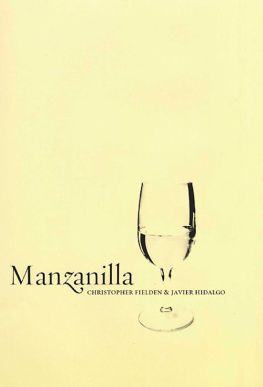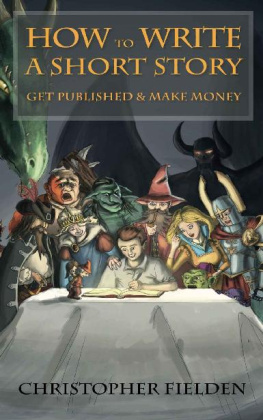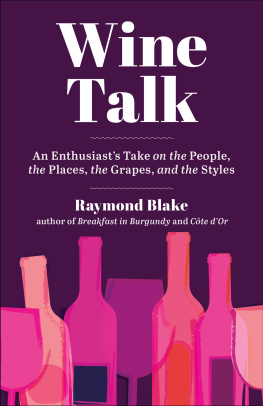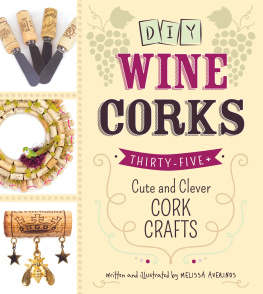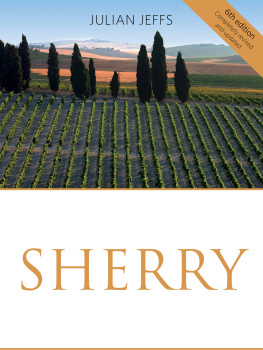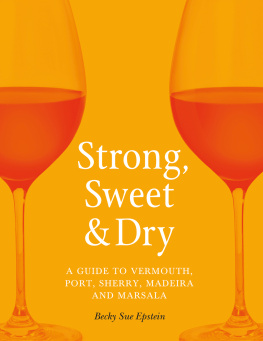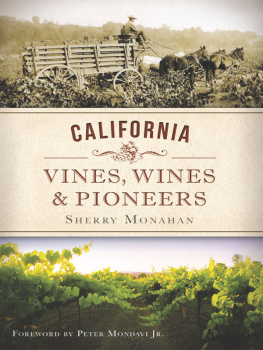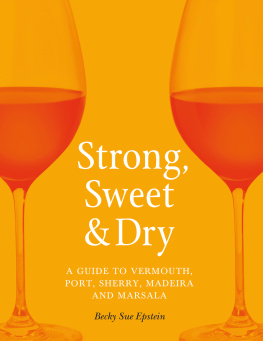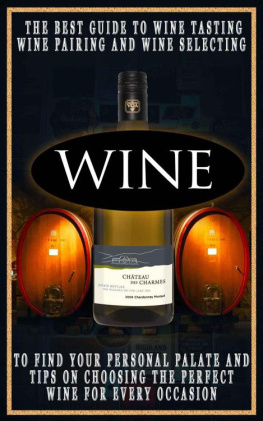
Published in 2010 by
Grub Street
4 Rainham Close
London
SW11 6SS
Email:
Web: www.grubstreet.co.uk
Text copyright Christopher Fielden and Javier Hidalgo 2009, 2010
Copyright this edition Grub Street 2010
First published in Spanish by Editorial Almuzara, S.L. in 2009 as La Manzanilla El vino de Sanlcar
A CIP catalogue record for this book is available from the British Library
ISBN 978-1-906502-63-8
Digital Edition ISBN 978-1-909166-92-9
All rights reserved. No part of this book may be reproduced or transmitted in any form or by any means, electronic or mechanical, including photocopying, recording or any information storage and retrieval system, without permission in writing from the publisher.
Printed and bound in India
This book has been printed on paper from sustainable sources
Contents
Foreword
Each and every year, more is written about wine, often without adding much that is new and fresh.
Sherry, as it rightly deserves, gets a share of this coverage, but little has been written specifically about the delicious wines known as Manzanilla Sanlcar de Barrameda, produced on the banks of the Guadalquivir River, and which, to the best of my knowledge, have never been the subject of a book written in English until now.
Manzanilla is affectionately written by an ideal combination of Christopher Fielden, wine merchant, author and pioneer importer of manzanilla and Javier Hidalgo, bodega owner, amateur jockey, and ornithologist. Their shared enthusiasm makes this book a must for anyone wanting to know more about such a fascinating wine.
The stories of manzanilla and the town which is its home, Sanlcar de Barrameda, are enticingly described in these pages. A glass of the chilled, crisp wine while you read will help you resolve that before long, you too, will go to Sanlcar de Barrameda.
Visit the bodegas, taste the wines and then sit on the banks of the Guadalquivir, drinking another glass or two. Enjoy the fresh fish from the bay and watch one of the finest sunsets in Europe.
This slim book holds the key to a special world which I urge you to explore.
Graham Hines, The Sherry Institute.
Introduction
Just a year ago, La Manzanilla El vino de Sanlcar, written by Javier and myself, was published in Spain. This is not that book, though much of the material is the same. Why have changes been made? Firstly, however traditional the wine trade might appear, it does move on and, for example, there have been changes in the meantime in the ownership of both companies and vineyards. Secondly, some of the material which is relevant to the Spanish reader, is less of interest to a reader in, for example, Britain or the United States. (Here, for example, I am thinking particularly of some of the recipes towards the end of the book, where certain ingredients are not widely available. Does braised coot appeal?) Thirdly, we have tried to make suggestions as to where he or she might stay, eat and, most important of all, sample the subject of this book, for the wine is part of the life of Andalusia and whilst it is at the heart of the picture, it is not the whole picture. Sanlcar is where the wine is produced, but from there it flows across the Guadalquivir to the Coto Doana and upstream to Seville and the rest of the world.
There are both advantages and disadvantages to a book having joint authors. In this case, I consider it a plus that Javier is able to write from the perspective of a lifetime in the sherry trade and the region, whilst I am able to look in from outside. On the other hand, there is the difficulty of expressing personal opinions. It was Javier who wrote the introduction to the Spanish book and in it he said:
In splitting the work between the two of us, Christopher looked after the chapters referring to the history of manzanilla, the place that it has in the world of sherry and the details on the various producing companies. I dealt with the rest. Throughout the text you will find opinions expressed in the first person, which sometimes belong to him and sometimes to me, without the authorship of that chapter being specified.
The same is still true of this book, though any major differences of opinion may have disappeared as the texts, in Spanish and English, passed between us.
Finally, I would like to thank all who have helped provide the body and soul of this book, be it in opinions, information, hospitality, good company or copitas of manzanilla. We have been particularly fortunate to have access to the archives of the late Duchess of Medina Sidonia. She was a formidable personality and will be much missed. The Barbadillo family, who have chronicled manzanilla, both in history and verse, were particularly generous in providing me with source books and each bodega I visited offered me a different perspective on the subject. Finally, this book would not have happened without the support of Jorge Pascual, President of the Consejo Regulador de las Denominacines de Origen de Jerez, Manzanilla y Vinagre de Jerez.
Christopher Fielden
February 2010
Where it all
Begins
The Guadalquivir, which in Arabic means the Great River, is the river of Andalucia. It rises in the Sierra de Cazorla and flows for six hundred kilometres through the cities of Cordoba and Seville to enter the Atlantic Ocean with, at its mouth, on the left bank, as it joins the sea, the town of Sanlcar de Barrameda and on its right, the vast wilderness of the nature reserve of the Coto Doana. It is distinctive as being the only navigable river in Spain, with ocean-going boats sailing upstream as far as Seville. This book, though, is not about the river, though it does play a distinctive role, but rather about the town at its mouth and the unique product that has spread its fame around the world, manzanilla.
This position of Sanlcar has been the root of the towns glorious history, for, here, over the centuries, it has been the first landfall for voyagers from afar and it has been the point of departure for explorers and merchants sailing to the furthest corners of the world. Just beyond the Pillars of Hercules and at the gateway to the Atlantic Ocean it was a strategic site as long as sailing ships were the main means of international transport.
Whilst traditional history has held that it was either the Greeks or the Phoenicians who first introduced the vine to what is now the sherry region, recent archaeological studies have shown that the vine was native to this part of Spain for centuries before their arrival. What is probable is that it was at the time of the Phoenicians that wine-making became general here, for there are remains of amphoras and pressing-troughs which date from that era. It was the classical geographer Strabo, who settled in Rome in about 14AD, who first wrote about these wines and it was he who said the Phoenicians first introduced the vine around 1100BC. Columella, the author of De Re Rustica, the great classical treatise on agriculture and viticulture, who also lived during the first century AD, was born on the family estate at Gades, current-day Cdiz.
The rule of the Romans was followed by that of the Visigoths, and, in turn, by that of the Mohammedans from the eighth to the thirteenth century. Whilst the Koran specifically forbade the consumption of alcohol, the production of wine seems to have continued in the region and poets of the time speak of the pleasure to be gained from it. At this time trade was mainly carried out by Jews, of whom there were a considerable number in Andalucia, and who enjoyed a protected status. In 960AD, Al Hakim II decreed that all vineyards should be destroyed, but it was pointed out to him that it would be impossible to prevent the importation of inferior wines from elsewhere, so his decree was never brought into effect.
Next page
